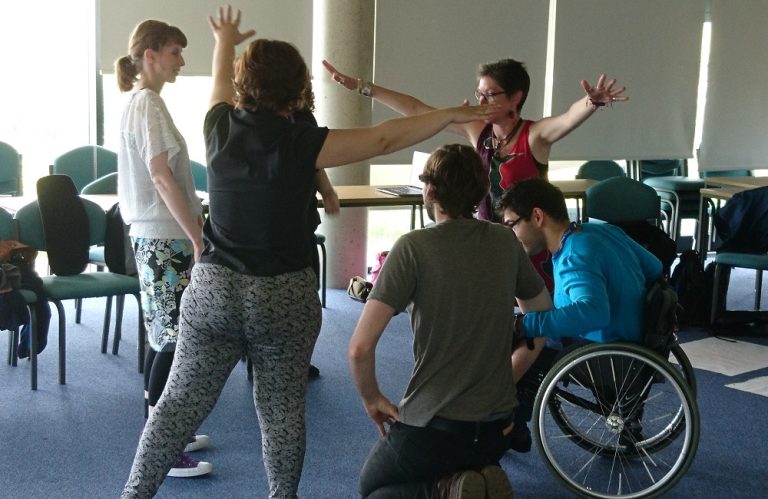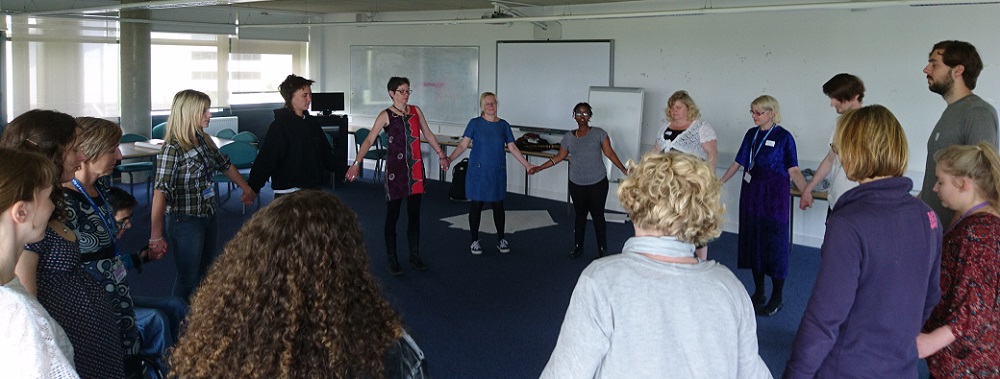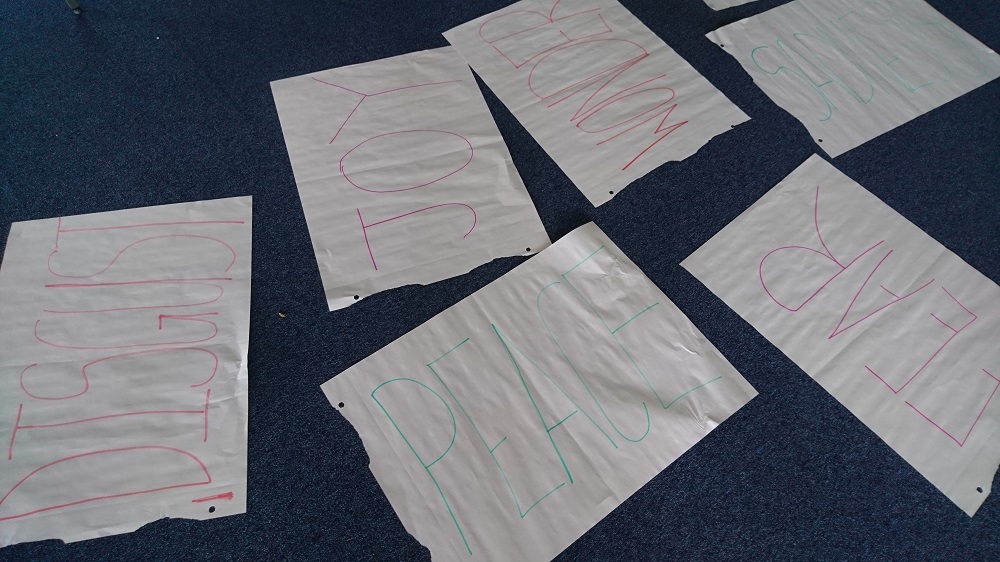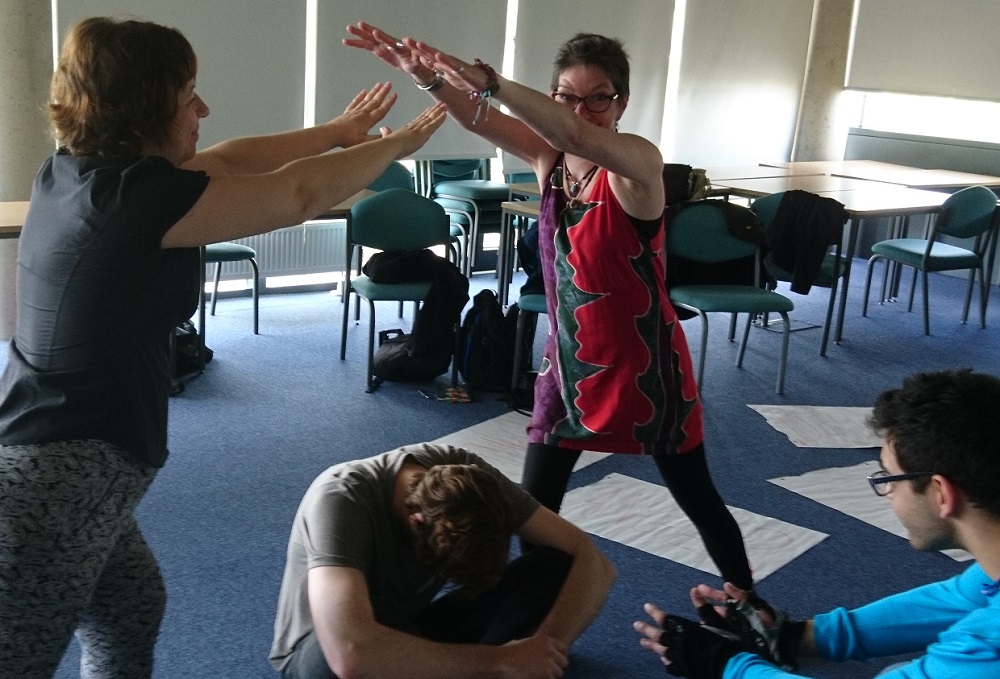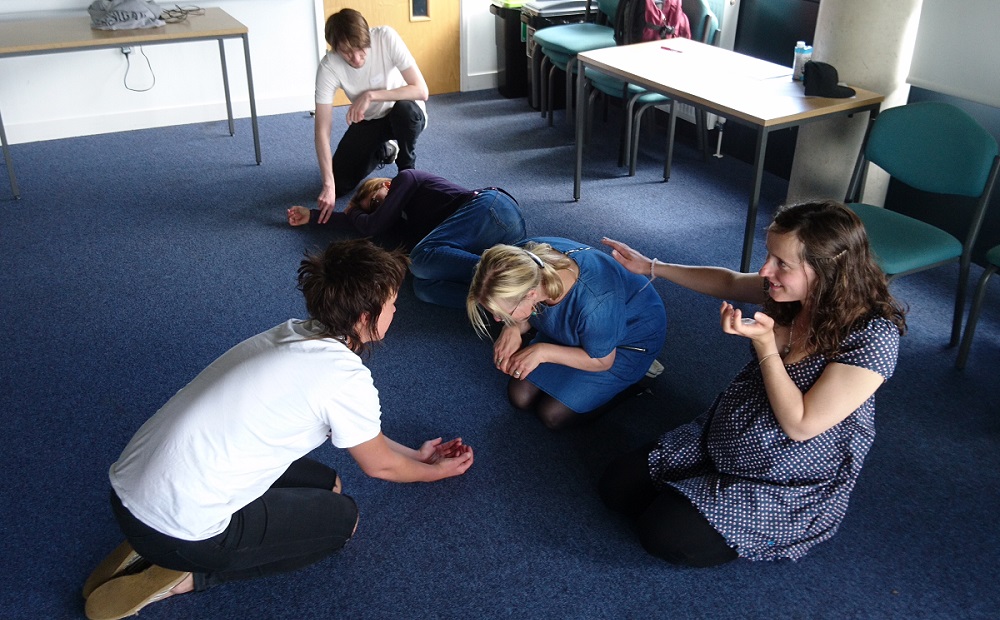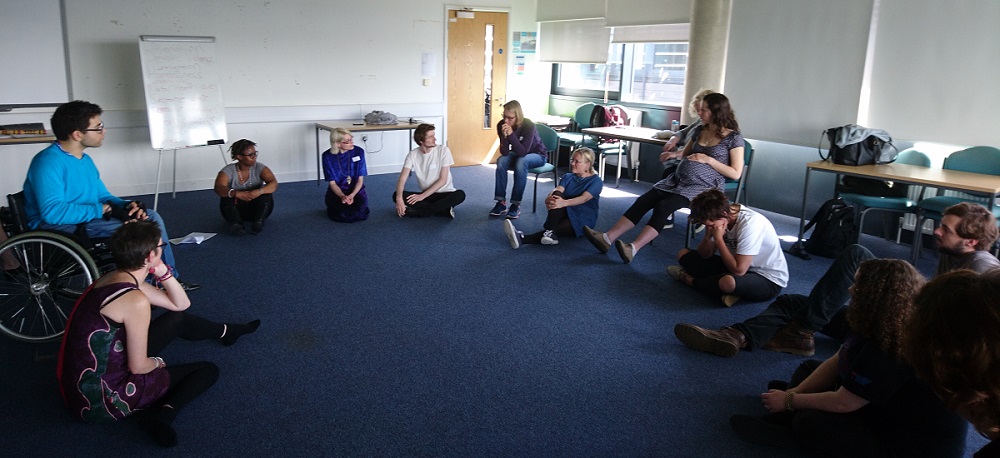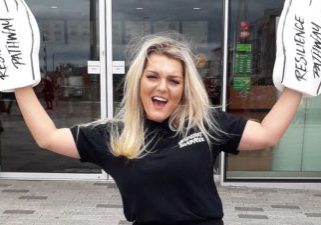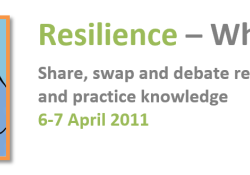Boingboing blogs from… the Resilience Forum!
Supporting young people’s resilience to drought: An arts activist approach in South Africa – Selogadi Mampane – Brighton Resilience Forum, Friday 9 June 2017
By Simon Duncan, Boingboinger
Nervous yet excited energy filled the room. Boingboing faces of new and old gathered for Selogadi Mampane’s Resilience Forum, entitled ‘Supporting young people’s resilience to drought: An arts activist approach in South Africa’. Selogadi travelled all the way from Pretoria to give us lucky Boingboingers a live preview of her arts activist approach for young people, which would be used as part of Boingboing and partners’ Patterns of Resilience to Drought project. Having heard about Selogadi’s history as a grassroots activist, performer and qualified artist, we were all certain that this would be a Resilience Forum unlike any that we had experienced before. We were not to be disappointed.
As soon as she introduced the session, Selogadi’s passion for her work and this project became abundantly clear. She traversed the room with an almost superhuman quality, simultaneously animated yet focussed, always moving around the room with a strong sense of purpose. She began by explaining that this session would be about using arts approaches to find, represent and locate innovative ways of overcoming inequalities within our society. But of course, we couldn’t do this instantly, we would have to be empowered and feel safe enough to be the most creative versions of ourselves.
Firstly, Selogadi set about unifying the group by instructing us to hold hands and build a circle of trust. Recognising that stress is a barrier to being creative Selogadi soothed us, and we began to sway from side to side to release the tension in our bodies that had accumulated after a long week of work. Furthermore, to be absolutely sure that all the stress was removed, Selogadi guided us through a breathing exercise. With each breath out we were releasing stress from ourselves and our stress took the physical form of a coloured ball which slowly floated out of the room into the far distance.
After de-stressing us Boingboingers (an almost impossible task if you ask me!) Selogadi’s near- magical creative powers came into sharp focus. We started to mingle around the room in an effort to ‘fill all the space’. Wherever there was an empty place, we were encouraged to rush in and fill it immediately. As we continued with our cardio regime for the day, Selogadi decreed that the room suddenly became colder. Almost instantly you heard the sounds of unconscious shivering and people holding onto their chests in an effort to stay warm from this sudden chill. When we thought the space couldn’t get any colder, it became unbearable and we were forced to huddle with each other for warmth, just like you see in those survivalist documentaries. This process illustrated to all of us that through the power of the arts, even the dullest space had the potential to become something infinitely more interesting.
Once we had eradicated the figurative frost in the room we noticed that different pieces of paper littered the floor and were marked with emotions such as ‘joy’, ‘disgust’ and ‘wonder’. Selogadi kept repeating the mantra ‘feeling is action’ and that when we feel we communicate it with our bodies. As individuals we were asked to journey around the room and emulate each emotion on the paper as we stepped on it. This activity allowed us to understand our emotions and how we each express them to others differently with our body postures’ changing even at the suggestion of emotion.
We reassembled into a circle and were presented with an extension of Selogadi’s creative power – her rainmaker. Like a magician with a wand, she claimed that this rainmaker had the power to become anything else except a rainmaker and she wanted us to improvise and use the rainmaker in different ways. Never let it be said that Boingboingers are afraid to try new things! Immediately we began to enter the circle individually and use the rainmaker as things like: a cane, an oar and a stick to write their name in metaphorical sand. To continue with this activity and convey the power we had to change things, we were then told that we would enter the circle again. Initially we would enter as individuals, but this time after performing an action with the rainmaker another person would come in and change it as part of a pair. Cue Lisa playing tug of war with Angie!
To unite the arts work with Boingboing’s inequalities approach Selogadi then asked us about what social issues affected us in our lives. Suggested answers included: homelessness, mental health issues, substance abuse, domestic violence, alienation, immigration, elderly care, inaccessibility/disabilities, work life stress, gentrification, hunger and poverty. We separated into groups and were asked to create images using our bodies, which reflect the social issues which we mentioned and the impacts these have on people who have lived experience of those issues. We had no props, yet we quickly concocted images representing hunger homelessness by creating a broken roof with our hands, portraying the disgust and fear that people with mental health issues are often experience and improvising a hungry person lying on the floor, in urgent need of medical attention.
In the aftermath of this exercise, we were then asked to create another image of the kinds of reactions we would like to see on the issues we represented before. Suddenly, the roof was fixed over the head of the acting, homeless person allowing them more security and stability. The person depicting having mental health issues received respect and understanding. The performer representing living in poverty received food and someone was there to make sure that they were OK. Thirdly, to make this activity co-productive and increasingly positive, other groups were invited to make suggestions on how to improve the situations for the people living in adversity even more. In this extremely creative space, we were able to visualise ways in which societal problems could be diminished and understand how the people we performed as play a role in solving those issues. It was a freeing and enlightening process.
Sensing that our creative juice would soon need to be replenished, Selogadi closed the session with one final circle, asking us what we had taken from this experience. I and many of my colleagues spoke about how by attending this Resilience Forum we felt galvanised and excited to see similar techniques in action. In equal partnership with the Leandran co-researchers and South African Masters students, all of us will support the facilitation of an environment which fosters mutual learning and exploration around different strategies, to diminish the threat of drought in Leandra. I’m really chuffed to be going to Leandra in less than two weeks and can’t wait to see what kind of creative techniques Selogadi will employ when working with the Leandran co-researchers.
Speaking of which, I better rush off to find my passport and pack my bags. Otherwise Angie will kill me for not being organised! Wish me and my fellow Boingboingers: Naz, Lisa, Angie and Scott bon voyage folks. Also, if you want to read what happened when Selogadi brought her magical rainmaker to Leandra to administer another dose of creative magic, watch this blog space…
Our participation in these events was supported by funding from the Arts and Humanities Research Council. Thanks so much to colleagues there who worked so hard to make it all happen.
